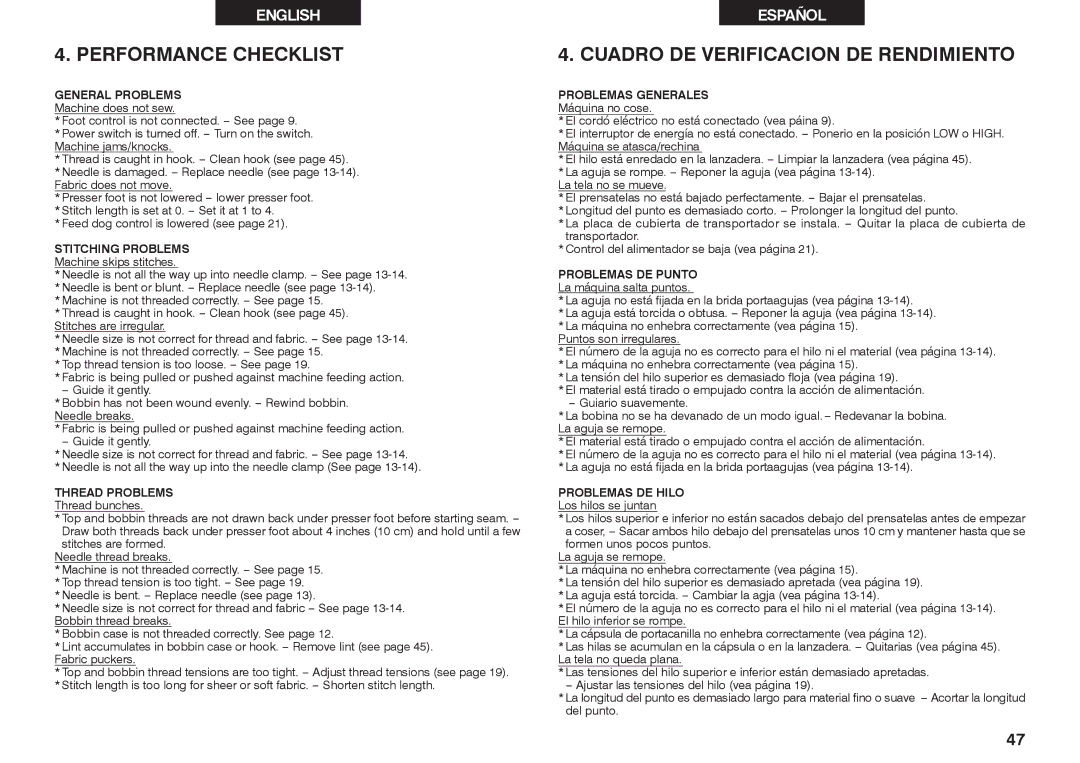2662 specifications
The Singer 2662 sewing machine is a versatile and reliable option that caters to both beginners and experienced sewers alike. Renowned for its user-friendly features and robust performance, the Singer 2662 is an ideal choice for anyone looking to explore the world of sewing, crafting, and creating.One of the standout features of the Singer 2662 is its easy-to-use automatic needle threader, which significantly simplifies the process of threading the machine. This feature helps users save time and reduces frustration, making it particularly useful for those who are just starting their sewing journey. Additionally, the top drop-in bobbin system allows for quick and easy bobbin changes, minimizing any potential downtime during projects.
The Singer 2662 boasts a versatile selection of 23 stitch options, which include basic stitches, decorative stitches, and stretch stitches. This wide array of stitches enables sewists to take on various projects, from simple repairs to more complex creations like garments and home decor. The machine’s adjustable stitch length and width further enhance creativity, allowing users to customize their sewing experience according to their project needs.
Portability is another significant characteristic of the Singer 2662. Weighing in at a manageable size, it is easy to transport to sewing classes or craft fairs, making it perfect for those who enjoy sewing on the go. The machine is also designed with a built-in carrying handle for added convenience.
Moreover, the Singer 2662 features a powerful motor that can handle multiple layers of fabric, ensuring consistent stitching quality across various materials. Whether you’re working with delicate fabrics or thicker materials like denim, the Singer 2662 maintains a steady performance, giving users confidence in their stitching.
Additional characteristics include a strong metal frame that provides durability and stability, ensuring that the machine can withstand regular use. The clear front cover makes it easy to monitor the bobbin thread supply, helping users stay on track with their sewing tasks.
In summary, the Singer 2662 sewing machine combines practicality with versatility, making it a compelling choice for anyone looking to explore their sewing capabilities. With features such as an automatic needle threader, an impressive range of stitch options, and a reliable motor, the Singer 2662 presents a solid foundation for countless sewing projects. Whether you're a novice or a seasoned expert, this machine is sure to meet and exceed your creative aspirations.
